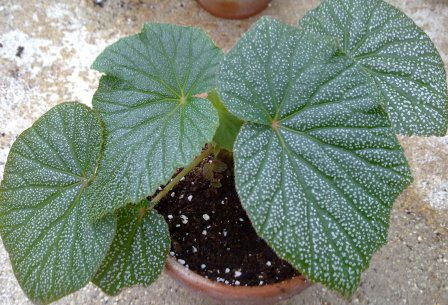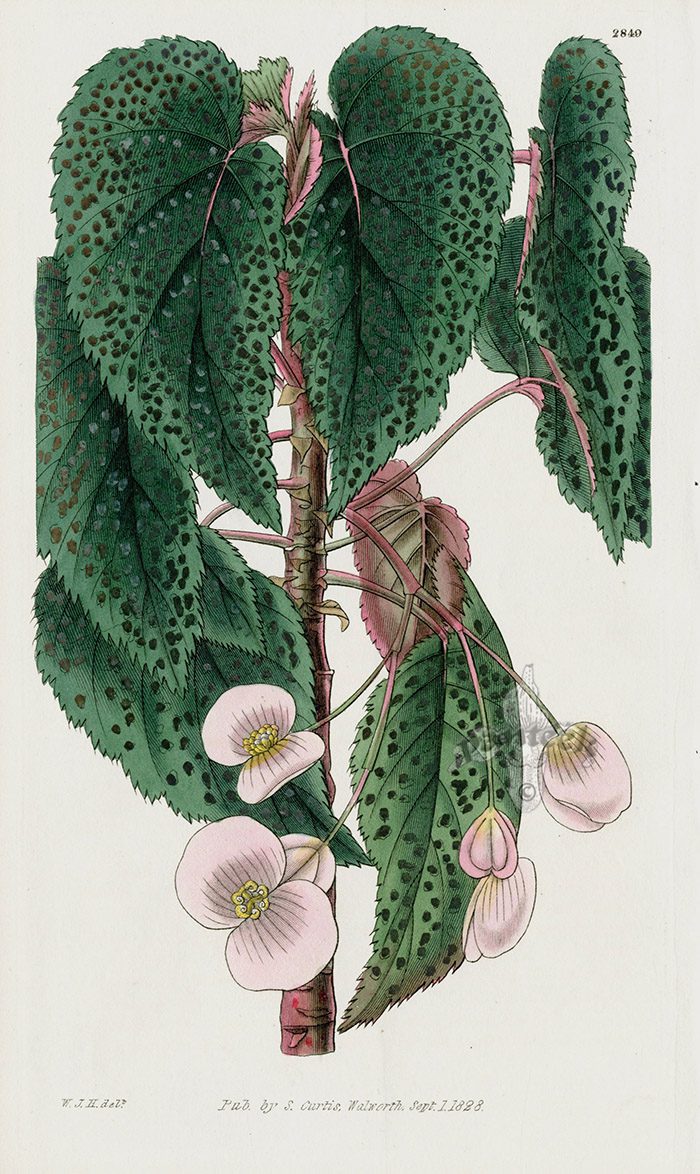This plant has very little information published about it, which is one of the reasons I adopted it for the ABS Adopt-A-Species Program. It is a program in which any ABS member can take on the responsibility for maintaining species begonias so they will not be lost to cultivation. B. dipetala has been around for a long time in Begonia years, having been found in Bombay, India as early as 1650 and published by Graham and T J Hooker in 1828. Over the years it has been incorrectly labeled as B. tuberosa and B. malabarica.
The Thompsons in their BEGONIAS: The Complete Reference Guide classify it as thick-stemmed, hairy-leaved, medium leaved (4 to 6 inches). It is a shady grower that stays low. The flowers are white and fragrant, flowering mostly in late winter and spring, but can appear nearly anytime except during the high heat of summer. The leaves are spotted as they emerge, but become solid green as they mature. They are very thin and prone to mildew. It is a good candidate for bonsai treatment as it branches rather freely for a thick-stemmed plant.
The Thompsons list it as for the Advanced Grower. This has not been my experience. While it will drop leaves from neglect, it always comes back when given attention. Its main enemy is mildew.
I grew my plant from the ABS Seed Fund many years ago. Seed for this species has been offered off and on since 1973. There are some hybrids listed using this as a parent, all listed as rexes, none of which are commonly grown. Branch member Patrick Worley has also hybridized using this plant creating, among others, B. ‘Shawne Worley,’ B.‘Daniel Worley,’ and B. ‘Jakarta.’
One final reason I adopted B. dipetala is that it has large flowers, thus easily self-pollinated. One of my projects will be to set seed to provide for the Seed Fund so that others can grow this interesting plant.




